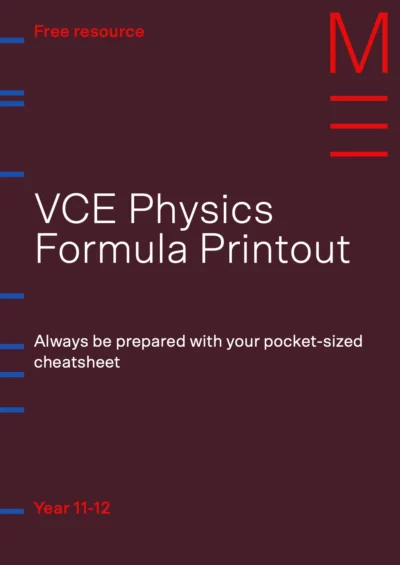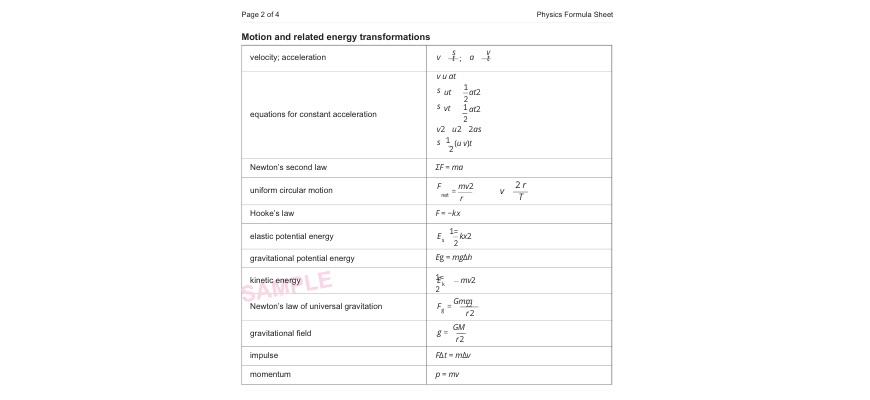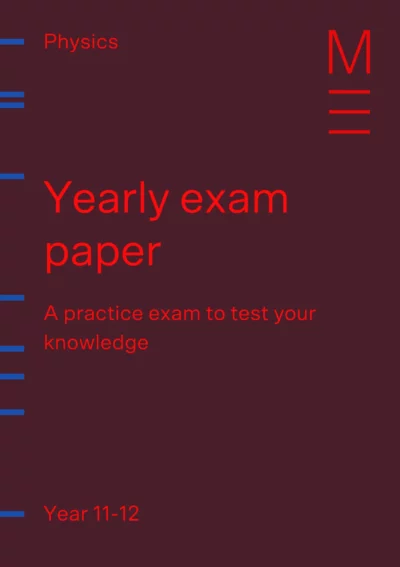Welcome to Matrix Education
To ensure we are showing you the most relevant content, please select your location below.
Select a year to see courses
Learn online or on-campus during the term or school holidays
Learn online or on-campus during the term or school holidays
Learn online or on-campus during the term or school holidays
Learn online or on-campus during the term or school holidays
Learn online or on-campus during the term or school holidays
Learn online or on-campus during the term or school holidays
Learn online or on-campus during the term or school holidays
Learn online or on-campus during the term or school holidays
Learn online or on-campus during the term or school holidays
Learn online or on-campus during the term or school holidays
Select a year to see available courses
Science guides to help you get ahead
Science guides to help you get ahead
Make the most of your Year 12 Physics exam formula sheet with these five essential tips! Learn how to quickly navigate the sheet and maximise your exam marks.

Join 75,893 students who already have a head start.
"*" indicates required fields
Related courses

Join 8000+ students each term who already have a head start on their school academic journey.
Do you want to save time in your VCE Physics exam and avoid panicking under pressure? The VCE Physics formula sheet provided in your Year 12 exams can save valuable time – but only if you know to use it properly!
Too many students waste precious minutes hunting for the right formula or second-guessing symbols. This article shows you five simple strategies to help you navigate the sheet faster and solve problems more confidently.
Table of contents:
Ace your next exam with all the essential formulas at your fingertips Fill out your details below to get this resource emailed to you. "*" indicates required fields
Grab your free VCE Physics Formula Sheet!

Grab your free VCE Physics Formula Sheet!
Before stepping into the exam room, you should already know where each section of the formula sheet is located. The sheet is divided into key topic areas such as motion, forces, energy, fields, waves, and electricity.
By knowing exactly where each formula is, you can reduce stress and save time searching for the right equation under pressure.

Do you know where to find each of these?
1. Motion or energy?
Can you locate the formula that links velocity, mass, and energy?
Hint: Is it under kinetic energy or momentum?
2. Fields or forces?
Which section includes Coulomb’s Law, and which has Newton’s Law of Universal Gravitation?
Hint: Look for the distinction between electric vs gravitational fields.
3. Circuits or waves?
Where would you find:
• the voltage divider rule
• the wave equation
Hint: Are they near electromagnetic induction or interference patterns?
4. Units and constants?
What’s the prefix for 10-9? Where do you find Planck’s constant?
Hint: They’re not in the main formula boxes. Have you checked the Data and Prefixes table at the end?
Recognising formulas is only useful if you understand what each variable represents.
Many physics equations use symbols that may appear similar but have very different meanings.
For example:
Memorise the meaning of each symbol and the units associated with them to avoid silly mistakes in calculations! Always check the context: is it from a motion equation, an electric field, or a wave formula?
1. What does “\(E\)” mean here?
Is \(E = \frac{1}{2}mv^2\) talking about energy or electric field strength?
Now compare it with \(E = hf\) and \(E = \frac{V}{d}\). Are they all the same kind of energy?
2. What does “\(F\)” mean in each case?
You’ll see:
Which one is gravitational, which is electric, and which is general force?
How do subscripts or accompanying variables change the meaning?
3. Is “\(v\)” speed, or something else?
In each, does “\(v\)” mean velocity, wave speed, or something else?
Is it constant, or does it vary?
Want Band 6 Physics resources?
Learn from expert HSC Physics teachers and structured lessons. See why 8000+ join Matrix each term.
Physics exams often test how well you can combine multiple concepts together, rather than just plugging numbers into single equations. The formula sheet can help you see connections between different topics.
For example:
Newton’s Second Law \(\Sigma F = ma\) connects with momentum \(p = mv\) and impulse \(F \Delta t = m \Delta v\).
Kinetic energy \(E_k = \frac{1}{2} mv^2\) links directly to work done \(W = Fd\) and gravitational potential energy \(E_g = mg \Delta h\).
Electric field equations \(E = V/d, F = qE\) relate directly to Coulomb’s Law \(F = k \frac{q_1 q_2}{r^2}\).
By understanding these links, you can choose the most efficient equations to solve problems quickly and avoid unnecessary calculations.
While the formula sheet provides a wide range of equations, some essential formulas are not explicitly included. In addition, the formula sheet does not contain any instructions on how to use the formulas, the appropriate SI units, or what the symbols represent.
For example, you should memorise:
Additionally, unit conversions and SI prefixes (like nano = \(10^{-9}\), kilo = \(10^3\)) are on the sheet, but you should know them well to speed up problem-solving and quickly estimate orders of magnitude.
Physics exams often require you to rearrange formulas to solve for different variables. The formula sheet provides the basic versions of equations, but in many cases, you’ll need to rearrange them to suit the question.
For example:
If you need to find mass (m) from kinetic energy:
\((E_k = \frac{1}{2} mv^2)\)
Rearrange it as:
\(m = \frac{2E_k}{v^2}\)
Or, if a question asks for acceleration (a) but gives you final velocity (v), initial velocity (u), and displacement (s), you can use:
\(v^2 = u^2 + 2as\), and rearrange it to, \(a = \frac{v^2 – u^2}{2s}\)
Practising these rearrangements before the exam will help you solve problems faster and avoid unnecessary mistakes.
Your Year 12 Physics formula sheet is your best friend during exams, but only if you use it effectively.
Take the time to:
Think of the formula sheet as a tool to support your problem-solving; not a substitute for it. Like any tool, you have to use it correctly to achieve the right outcome! Combine it with strong problem-solving skills, and you’ll be well-prepared to tackle any physics question that comes your way.
Try our Physics practice paper and see how well you can use your formula sheet.
Put your knowledge to the test with our Year 11 Physics yearly exam paper. Fill out your details below to get this resource emailed to you. "*" indicates required fields
Get ready for your Yearly Physics Exam

Get ready for your Yearly Physics Exam
Written by Matrix Science Team
The Matrix Science Team are teachers and tutors with a passion for Science, across Biology, Chemistry and Physics, and a dedication to seeing Matrix Students achieving their academic goals.© Matrix Education and www.matrix.edu.au, 2025. Unauthorised use and/or duplication of this material without express and written permission from this site’s author and/or owner is strictly prohibited. Excerpts and links may be used, provided that full and clear credit is given to Matrix Education and www.matrix.edu.au with appropriate and specific direction to the original content.